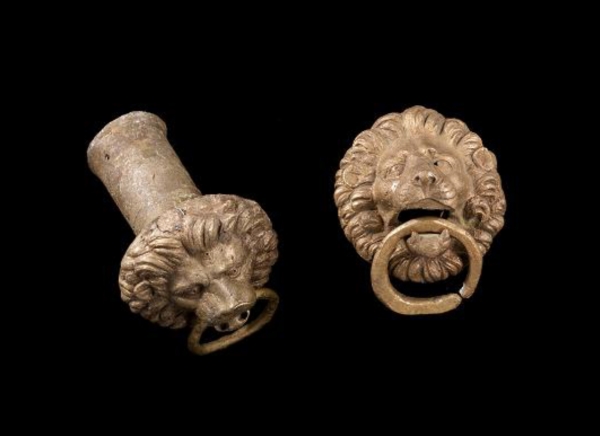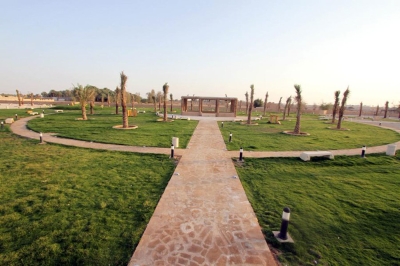

Two Bronze Statue Heads are ancient artifacts used as decorative ornaments. They were discovered in archaeological Qaryat al-Faw, one of the historical archaeological sites of past civilizations, located southeast of Wadi ad-Dawasir Governorate in Riyadh Province, in the Kingdom of Saudi Arabia.
The two statue heads consist of two bronze ornaments made of copper, shaped as a lion’s face gripping a circular bronze bracelet between its jaws. A circular groove surrounds the back of the head, which is believed to have been used for attaching the lion’s head. The figure was cast in a mold and fixed at the end of a widened tube shaped like a large circle. The rear body of the tube features a restored section with some missing parts. Near the tube’s edge, there is a small hole similar to the one found in the other artifact, with an iron piece attached on the inside and another on the outside. Opposite the hole, an iron piece is fixed to both sides of the tube or its wall, through a hole resembling the one previously mentioned.
Dimensions of the two statue heads
Lion head diameter: 8.8 cm.
Tube diameter: 4.5 cm.
Lion head diameter: 8.8 cm.
Tube diameter: 4.5 cm.
History of the two statue heads
The two bronze statue heads date back to the third century BCE and are preserved at the Museum of the Archaeology Department at King Saud University in Riyadh. They are registered under the numbers 346 and 347 F1.
The bronze statue heads were selected as part of a diverse collection of archaeological discoveries to be showcased in the Saudi Archeological Masterpieces Through the Ages Exhibition, whose first international edition was held at the Louvre Museum in Paris in 2010.
Their discovery is one of the results of archaeological survey and excavation efforts carried out by the Antiquities and Museums Sector in Saudi Arabia in past years. They are among the findings of Saudi archaeologists and scientific missions.
Significance of the two bronze statue heads
The striking similarity between these two ornaments confirms that they were made from the same mold. Their maker successfully highlighted intricate details, achieving a high degree of realism in depicting the lions, which were designed to serve as ornaments or handles. Many ancient civilizations in the Arabian Peninsula adopted lions as symbols of royalty, representing strength and power.
Related quizzes
Related articles
